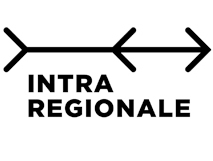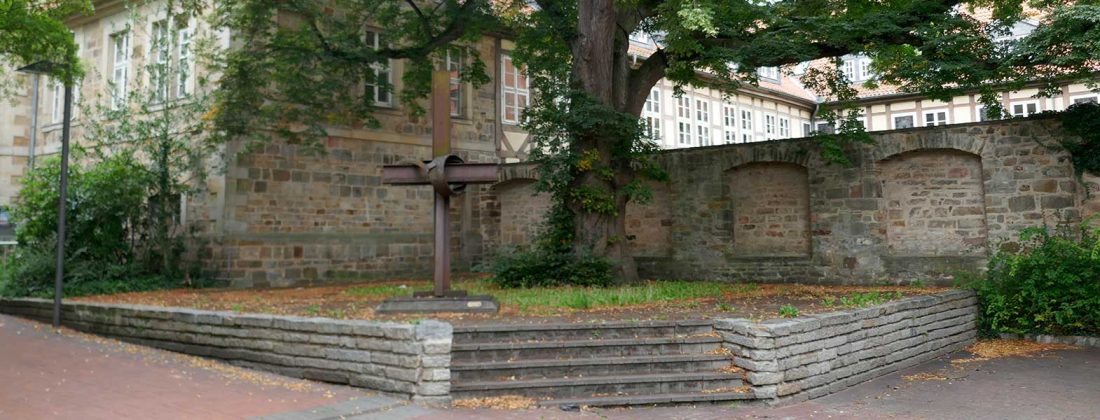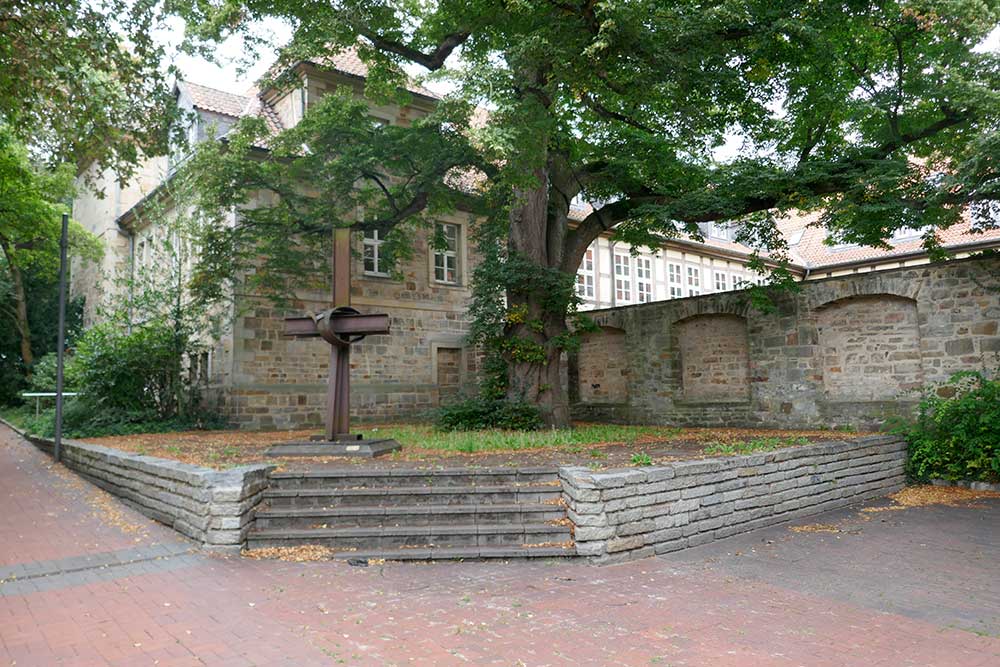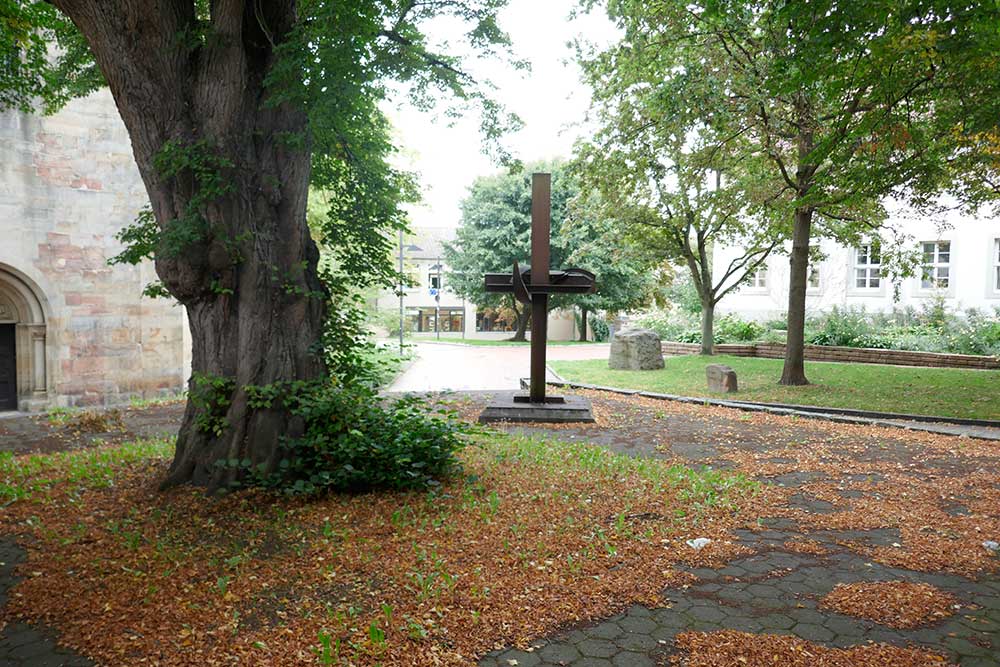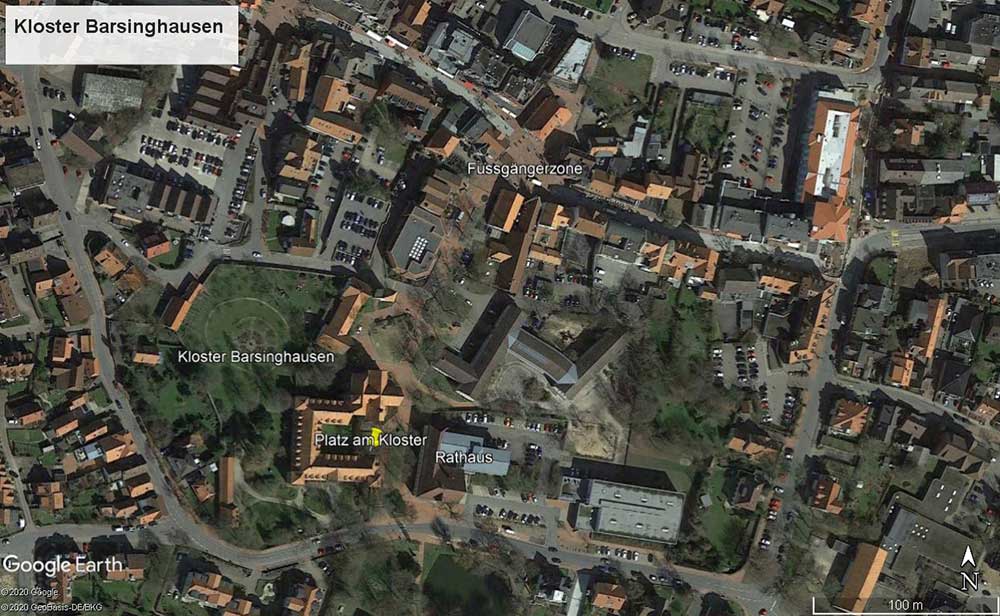The selected site at Mont-Saint-Aignan-Square is located at the southern entrance to the pedestrian zone in the center of Barsinghausen. It is a u-shaped place between the monastery, the monastery wall (behind it is the inner courtyard) and the monastery church. It is slightly sloping towards the north. On a platform with four steps stands an old gnarled linden tree and in front of it a sculpture by the sculptor Hannes Meinhard.
On the opposite side of the path is the side wing of the town hall of the city. In between there is a lawn with two memorial stones: for the Jewish fellow citizens who were victims of Nazi violence and for German Unity. There are benches on the square.
The grounds of an elementary school border on the town hall.
The square is, so to speak, the border and the transition between the tranquility of the time-honored, shielded monastery with its life of faith and the busy everyday life of the city.
The monastery is a source of identity for the town of Barsinghausen. The first documentary mention of the place goes back to the foundation of the monastery in 1193. The building complex that exists today was built at the beginning of the 18th century.
Today, the monastery is still inhabited and run by convent nuns of a Protestant-Lutheran community.
Since 2014, the monastery has also housed the regional church institution inspiratio. This provides pastors and church employees with the opportunity of an accompanied time-out.
Despite the strengthening of Barsinghausen through the monastery, the town still sees itself as a mining town. For centuries, coal mining in the Deister became a formative economic force and shaped the people of the town. The last mine was closed in the 1950s.
The present town hall opposite the square, built in 1682, was initially the work and residence of the monastery administrator, then, from 1885, the Royal Mining Authority. In 1965 it became the town hall. To this day, the mayors finish their speeches with the miners’ greeting “Glück auf”.
